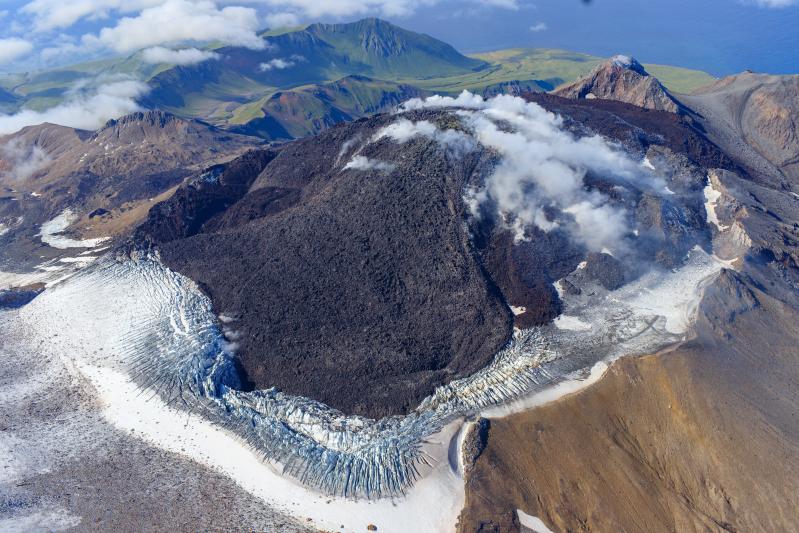| Red (Warning) | |
| Orange (Watch) | |
| Yellow (Advisory) | |
| Green (Normal) | |
| Uninstrumented |
Aleutians
(52.0765, -176.1109)2025-07-11 21:17:35 UTC
Satellite radar data through July 10 show continued effusion of the southwest lobe with minor advancement of about 10 meters (33 feet) to the south. Rock falls from the steep flow margins continue. Elevated surface temperatures related to this activity were observed in satellite data throughout the week during periods of clear viewing conditions. Occasional small earthquakes persist.
The lava eruption that began in July 2021 is ongoing. It has filled most of the summit crater and advanced into valleys below. There have been no explosions at Great Sitkin Volcano since an event in May 2021. The volcano is monitored using local seismic and infrasound sensors, satellite data and web cameras, and regional infrasound and lightning networks.
Cook Inlet-South Central
(61.2989, -152.2539)2025-07-11 21:17:35 UTC
Unrest continues at Mount Spurr. The level of activity remains slightly above background but continues to decline since the peak of unrest earlier this year. The decrease in activity suggests that the magma intrusion beneath Mount Spurr has stalled and that the likelihood of an eruption has declined.
Earthquake activity continues, with a small number of earthquakes located beneath both the summit of Mount Spurr and Crater Peak. The number of earthquakes and their magnitudes continue to show some variability from week to week but are following a decreasing trend. Ground deformation, as measured by GNSS (GPS) stations, remains paused as it has for the last two months. Volcanic gas emissions continue, as would be expected from a passively degassing body of stalled magma.
Fluctuations in unrest are common at volcanoes and eruptive activity remains possible, but unlikely. Should unrest escalate towards an eruption, we would expect to observe increases in seismic activity, gas emissions, surface deformation, and surface heating
AVO continues to closely monitor activity at Mount Spurr for signals indicating the volcano is moving closer to an eruption using local seismic, infrasound, and GNSS (GPS) stations, web cameras, airborne and satellite gas measurements, regional infrasound, lightning networks, and satellite images. Livestream camera video from station SPCL located south of Mount Spurr can be viewed at: Mount Spurr Live Stream (SPCL). A livestream of Mount Spurr, as viewed from Glen Alps in Anchorage, is available here: Mount Spurr Live Stream (ANCG).



